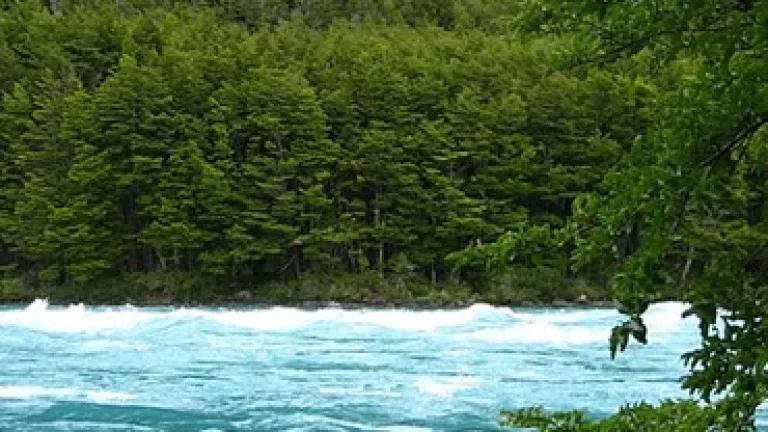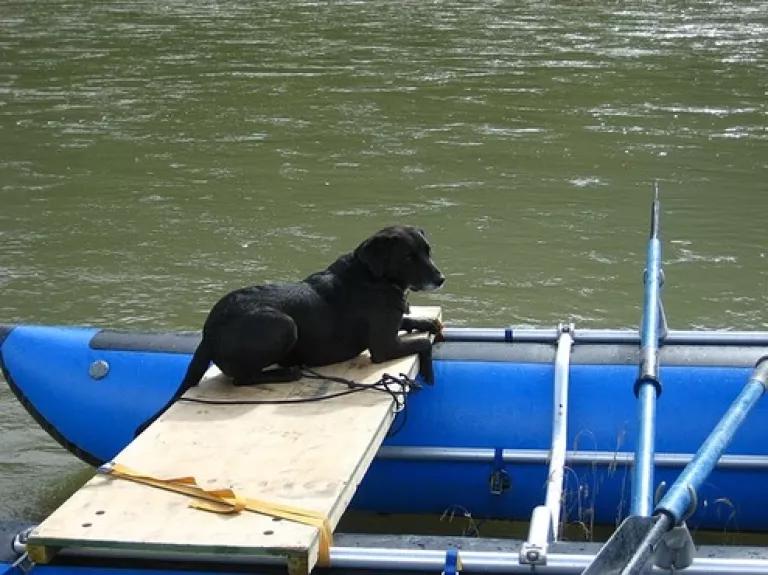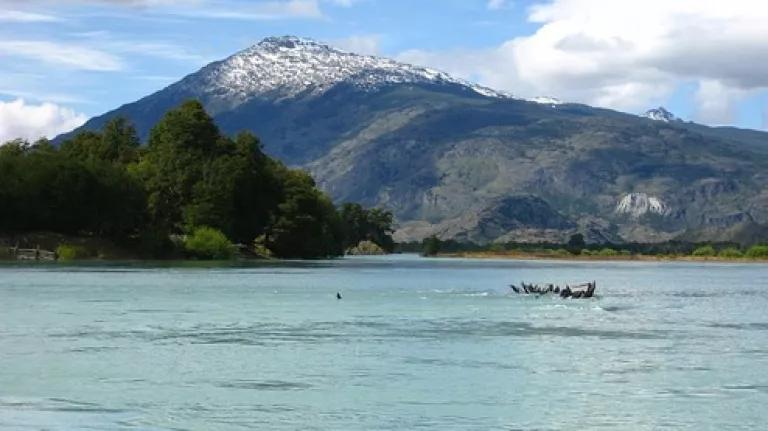
I’ve just returned from an extraordinary four-day trip down the Baker River in the heart of Chile’s Patagonia. Over the last several months I’ve been working on NRDC’s Patagonia BioGem campaign to save the Baker and Pascua Rivers from a massive hydroelectric scheme, and I’ve seen plenty of photos and videos of both. But none of them could have prepared me for the reality of the brilliant blue-green color or the awesome raw power of the Baker. That first glimpse of the river was truly a breathtaking experience.
my first glimpse of the Baker River
I was delighted to be a part of a research team led by Brian Reid, a limnologist (a scientist who studies fresh water bodies such as lakes, ponds or rivers) and the captain of our boat/catamaran. Brian is studying sedimentation in the river (more about that later) and takes this trip monthly to collect research samples. We were joined by Andy, a geomorphology Ph.D. candidate from the University of Idaho, and Nicolas, a Chilean radio journalist from Coyhaique, the Aysén Region’s capital city. Oh, and Sunny, Brian’s constant canine companion.

Sunny, ready to go!
We followed the Baker by car from its source in Lake Bertrand to the place where we boarded our boat and pushed off, just outside of the town of Cochrane. (You can see it all on Google Maps here.) We stopped twice between those two points, first to see the confluence of the Baker and the Nef Rivers, and then at the Baker’s confluence with the Chacabuco. We traveled for four full days on the Baker, rowing through rain and wind, and occasionally enjoying some sunshine, before finishing our trip just above the river’s delta.
The sheer scope of the landscape was mind-blowing. Everywhere I looked I saw the snow-capped Andes looming above me. The variety of trees and plants never seemed to end: in the morning the foliage was lush and tropical, and then became sparse and woody by the afternoon. There was life everywhere: salmon jumping in the river, herons and cormorants gliding along the water’s edge, guanaco grazing on a hillside with condors soaring gracefully above. And there was always the sound of the river.
Patagonia really is the wildest, most pristine and untouched place I have ever been.

Since I returned to Washington, D.C., I’ve constantly been reflecting on the trip and all that I saw while I was there – the unspoiled terrain, the gracious people, the diverse flora and the fauna, as well as the river itself. I’ve thought about what this place means to its inhabitants, what it means to Chile, and in a larger sense to the planet. Over the next few days, I’ll be posting several topical “chapters” about my trip. For now, I’ll end this introduction with a slogan that one of our partner groups in Patagonia uses for the Aysén Region, “La Reserva de Vida,” which couldn’t be more fitting. This place is a true Reserve of Life.

